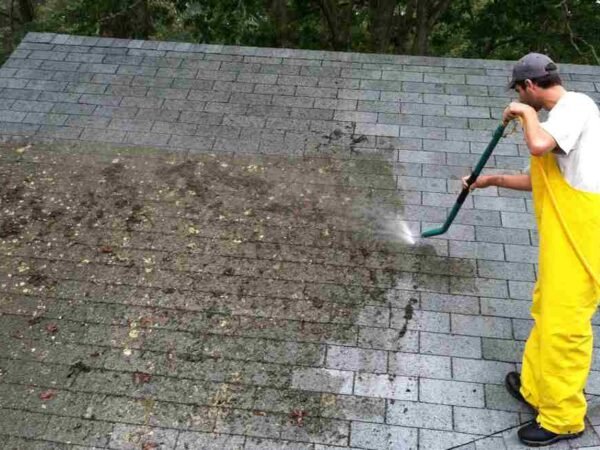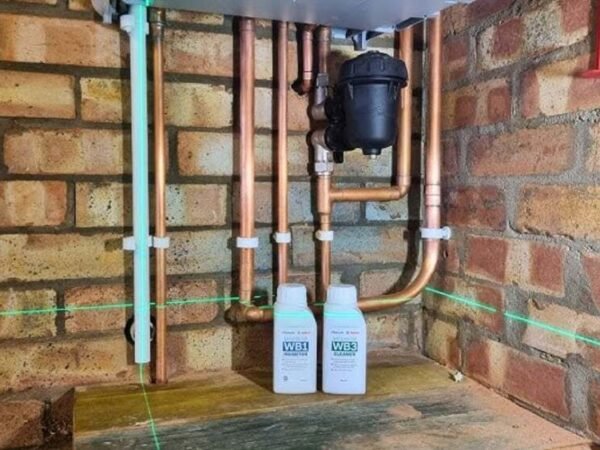The water we depend on for drinking, agriculture, and industry flows beneath our feet. Yet, as that groundwater is drawn upon, threats emerge that could undermine our health and livelihoods. Chemicals dumped long ago or leaks from ageing infrastructure today have seeped into aquifers, carrying hidden risks.
While out of sight, groundwater contamination is not out of mind. The pollution below grows less invisible as its consequences become increasingly clear – in cancer clusters, crop failures, and public health advisories too frequent to ignore.
As stewards of this unseen resource and our collective future, we can no longer afford complacency. It is time we faced this problem and sought solutions with the diligence it demands. Our well-being depends on it.
What Are the Sources of Groundwater Contamination?
There are several potential pathways for groundwater to become contaminated. Underground storage tanks that hold fuels, oils, or other liquids can develop cracks or leaks over time, allowing their contents to seep into aquifers below. The EPA estimates over 10 million underground tanks nationwide pose this risk.
If onsite wastewater systems are not appropriately positioned, built, and maintained, they could pose a further risk. Septic systems are used by houses and other structures without access to sewage infrastructure to treat and distribute wastewater underground. They can introduce bacteria, viruses, and chemicals into local groundwater supplies when failing.
Abandoned lands where hazardous waste was once stored or disposed of require remediation, as containers may leak pollutants into the subsurface. Over 20,000 such contaminated sites have been identified so far. Nearby aquifers are threatened without cleanup efforts.
Municipal solid waste landfills are designed with liners. Still, these barriers can break down or be breached over decades of use. Standard trash like vehicle fluids, paints, and household chemicals may leach into underlying water sources from landfills.
Pesticides, fertilizers, deicing salts, and other chemicals widely applied to roads, croplands, and lawns can contaminate groundwater if rainfall carries them below the earth’s surface.
Over time, groundwater is also at risk from airborne pollutants or contaminants in other hydrologically connected waters. Proper management is needed to minimize all potential contamination pathways to this crucial resource.
Camp Lejeune Lawsuit Highlights Health Concerns Linked to Groundwater Contamination
Between 1953 and 1987, over one million individuals stationed at Camp Lejeune in North Carolina may have encountered hazardous substances in the water system. Those who could have been exposed, including veterans, family members, base personnel, and others, have initiated legal action through the Camp Lejeune lawsuit.
Camp Lejeune, home to the 1st Marine Expeditionary Force providing expeditionary forces to the Marine Corps, faced a significant issue in 1982 when toxic chemicals known to cause cancer were discovered in the drinking water.
The contamination stemmed from two water treatment plants supplying the base – Tarawa Terrace and Hadnot Point.
The presence of these chemicals has been linked to various health issues, affecting up to one million individuals. Alarmingly, higher-than-normal disease rates have been observed near the base.
According to TorHoerman Law, research has identified associations between the contaminated water at Camp Lejeune and several types of cancer, along with other conditions.
The Centers for Disease Control and Prevention (CDC) has conducted studies that show increased risks of malignancies of the kidney, liver, oesophagus, cervix, and other organs. They have also discovered higher chances of pediatric illnesses like leukemia, lymphoma, neural tube disorders, and birth problems.
Confirming these findings, the Agency for Toxic Substances and Disease Registry (ATSDR) conducted similar research and is investigating potential links to additional cancers and chronic illnesses.
Specific health issues connected to the contaminated water range from numerous cancers to diseases and symptoms like miscarriage, congenital disabilities, infertility, liver damage, and neurodegenerative disorders.
Recognizing the gravity of the situation, the Department of Veterans Affairs acknowledges several presumptive conditions for eligibility for disability benefits.
Furthermore, President Biden’s recent enactment of the Camp Lejeune Justice Act signifies a crucial step forward, granting affected veterans and other individuals greater access to compensation. This legislation marks significant progress in supporting those harmed by the toxic water at Camp Lejeune.
What Steps Can We Take to Reduce Pollution in Groundwater?
Both at home and in the community, there are proactive steps we can take to help reduce groundwater pollution. Contamination can persist for years in aquifers and take significant effort and expense to remediate. Thus, prevention is the most strategic approach.
At home, properly disposing of all waste and avoiding dumping chemicals down drains or on the ground are paramount. Underground fuel tanks should be inspected for leaks and replaced above ground if possible.
All chemicals and fuel must be safely stored. Household chemical usage should be minimized, and products should only be used as directed. Septic systems need regular pumping and inspection every five years. Wells and surrounding land areas should be examined for issues, and well water testing should be conducted based on pollution risk levels.
Best practices can also be implemented at work. All waste requires proper disposal, and wastewater discharge points must be appropriately connected or drained. Septic systems should be used and maintained correctly where available.
Outdoor waste receptacles should be plugged and covered. Chemicals and fuels must be securely stored, handled, and used. Underground tanks should be monitored for leaks and replaced above-ground if feasible. Storage and loading areas must be contained. Chemical substitution or reduction aims to lower usage when practicable.
Municipal-scale efforts are equally impactful. Land use planning and regulations should shield essential aquifers and wellfields. Legislation and programs fortifying protections warrant endorsement.
Residential and commercial groundwater education is needed. Important recharge regions factor into open space acquisition decisions. Crucial wells and aquifers demand continuous monitoring and inspection.
Household hazardous waste collection events properly dispose of chemicals. Town facility operations must exemplify pollution prevention techniques.
Through diligent conservation practices and responsible stewardship from all stakeholders, we can work in concert to safeguard this critical natural resource for generations to come. Pollution prevention, as the most constructive solution, merits collective prioritization.
Do Read: The Indispensable Role of Construction Estimating and Takeoff Services
FAQs
How do humans contribute to water contamination?
Human activities, including the discharge of sewage and septic wastes and runoff from animal feedlots and wildlife, can introduce harmful microbes into drinking water sources. Common contaminants include Giardia, Cryptosporidium, and E. coli. Effective treatment and distribution methods are crucial in mitigating these risks.
What are the most prevalent contaminants in groundwater?
Groundwater can contain various substances naturally present in rocks or soils, such as iron, manganese, arsenic, chlorides, fluorides, sulfates, or radionuclides, which may dissolve into the water. Additionally, naturally occurring organic matter can be transported as particles within groundwater.
What are the two consequences of contaminated groundwater?
Illnesses, including cholera, giardiasis, and hepatitis, can result from contaminated water containing bacteria and viruses. High nitrates in drinking water can lead to hemoglobinemia, also known as “blue baby syndrome,” which is especially harmful to young children. Benzene, a carcinogenic component found in gasoline, poses a known risk of causing cancer in humans.
Together, through awareness, preventative action, and cross-sector cooperation, we can curb the threats to our groundwater and ensure this vital resource remains safe, clean, and accessible for all. The well-being of people and communities depends on such vigilance in protecting the water flowing beneath our feet.













